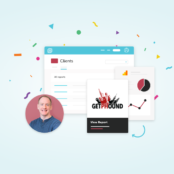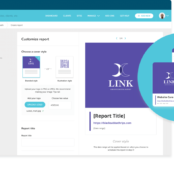I am a Junior Designer at Flywheel and a Black designer who works in the tech industry. I’m a part of the 3% of professional designers who are Black, and 5% of Black people in the tech space. We are significantly underrepresented in both areas, so I’m here to discuss with you why more tech companies should be allies and co-conspirators with the BIPOC community and striving to advocate for equity, proper representation, and a diverse and inclusive workforce.
These past few months have been different for me, my community, and the people looking from the outside in. For many, it has been a time for change, learning, and reflection. As a Black man, I’ve watched my coworkers begin to grapple with and understand the realities, challenges, and historical oppression people like me have faced in the world (and in the workplace). But this desire to learn and understand hasn’t always been there.
The truth is that it’s been far too long (and extremely frustrating) for me and my Black peers to have to continue to explain that oppression in the workforce isn’t momentary; it’s systemic. It’s a product of white applicants receiving 36% more callbacks than the equally qualified Black applicant. It’s a product of Black-sounding names receiving roughly 50% fewer callbacks than those with white-sounding names. But, things are beginning to shift, which means we must work harder and more diligently to reach and actively recruit from these underrepresented groups.

It’s one thing to say you see a problem and that you want to see more diversity and inclusion in your industry, but it’s entirely different to take those words and actually live them, making it a cornerstone of your business.
“We have to focus on being intentional about seeking out diverse talent and getting them a seat at the table. Actively expanding your talent pool through job postings to diverse job boards, ensuring our job descriptions are inclusive, and having intentionality around who you are sourcing are some of a few ways we recruit that talent.” -Kelsey Campbell, Senior Talent Advisor

At Flywheel, we made Diversity and Inclusion a company-level goal in 2020 because we knew we needed to do better. How did we drive this goal? Through company buy-in and employee advocacy.
It’s essential to allow your employees to speak about the influence and power they have as a minority. One way to do this is to establish employee resource groups (or ERGs). Rise, Roar, and Hue, our ERGs that represent BIPOC, women, and LGBTQ+ people respectively at Flywheel, aid in better decision making and create greater outreach and name recognition within the Omaha community. By bringing a more diverse coalition of ideas and perspectives to the table, your company and brand can create a more expansive talent pool and greater brand awareness. So, not only does it support underrepresented communities, it creates new voices in your business.

Another great way to directly impact minority representation in the tech space is to partner with local organizations that are dedicated to empowering and creating opportunities for Black people to have careers in technology (and while monetary donations are great and should continue, it should never be where the advocacy stops).
“Creating community partnerships is all about connecting and showing up for what the group needs from you. It’s not about showing up one time, but being consistent and cultivating that relationship over time.” -Amanda Martinez, our Engineering Manager and D & I Community Champion
If your company genuinely wants to help, then amplify the voices in the community that are already doing amazing things. A great example of this is Flywheel’s partnership with Rachel Fox, the founder of You Go Girl, a not-for-profit focusing on empowering women and women of color in the tech industry. Amanda, our D&I Community Champion, made a connection with Rachel, and Flywheel is now partnering with You Go Girl on upcoming coding classes. Most recently, Rachel talked at Flywheel’s all-company retreat in July about racial inequity in the workforce where 70+ people attended. She elaborated on the importance of investing in our youngest generations, and to not only make an effort to employ them in the future, but to start educating those who wish to learn now.

“It’s way more difficult to break through the tech industry when you’re older and have been told you can’t, instead of when you’re young and you’ve been told you’re a badass and can do whatever you set your mind to.” -Rachel Fox
Rachel’s thoughts and sentiment are not theoretical either; she’s proven the benefits of educating and empowering people at a young age. You Go Girl has created paths for dozens of girls and future generations to develop an interest in, and start thinking creatively about tech. And this is just one organization of hundreds in the country that are dedicated to this mission. If more businesses were to partner with local leaders like Rachel, they could lead the way in diversity and inclusion initiatives, while also tapping into some of the newest, most innovative, and creative ideas in their specific space.
So, why does this matter? To be frank, it’s the right thing to do. But, in a more business-centered justification, it will create a sense of belonging for your employees, aid in the development of ideas, improve the community you serve and operate in, and finally, lead to more voices at the table, which leads to innovation and growth.

“For organizational leaders at all levels, it’s absolutely essential that you do the active work to eradicate biases in your business – both conscious and unconscious. I’m fond of saying the phrase ‘diversity attracts diversity, which includes diversity in all its forms: diversity of ideas, beliefs, and people. You have to be intentional about diversity; balance doesn’t just happen. You must set goals, measure progress, and hold all leadership accountable for diversity and inclusion, not just a single leader with that title. Together it is our collective responsibility to cultivate a flexible, empowering, and inclusive workplace for all leading to fulfillment, opportunity, and progress for all.” -Heather Brunner, Flywheel and WP Engine’s CEO
But, don’t just take our word for it. Studies show that brands that are active in the community can see a direct boost in performance indicators, such as employee engagement. More research shows that 86% of Generation Y workers greatly value their companies’ corporate social responsibility programs and would quit their jobs if those programs started to slip.
Furthermore, companies who practice and align themselves with positive community-oriented goals can see an uptick in customers and/or clients. Roughly 82% of consumers consider companies’ social responsibility when deciding on services or products to buy.
We have seen how companies and brands can suffer when their messaging or opinions are disrespectful or antiquated. This can lead to brand boycotts, an allocation of time and effort into correcting a preventable problem, and in turn affecting your bottom line. Ultimately, this isn’t about hitting your goals for the quarter, but it is important to note that not being progressive when it comes to D&I efforts can affect your business’ success in the long run.
It’s important to note that no company has perfectly cracked the code to this yet, and Flywheel will be the first to admit that its D&I strategy has been a work in progress. But the most important thing to do, whether you’re starting a company today or are a Talent Acquisition Manager for a booming tech business, is to advocate for continuous action toward hiring and supporting diverse talent. If you’re doing it the right way, the “box checking” mentality will soon become a thing of the past, and super small percentages like 3 and 5% will slowly start to grow, along with your culture, company, and community.





































































































Comments ( 341 )
Josephner
May 28, 2025
Online drugstore Australia: PharmAu24 - Medications online Australia
CurtisAdurl
May 28, 2025
Medications online Australia: Medications online Australia - Discount pharmacy Australia
Josephner
May 28, 2025
online ed pills: Ero Pharm Fast - Ero Pharm Fast
CurtisAdurl
May 28, 2025
PharmAu24: Pharm Au 24 - Pharm Au24
CurtisAdurl
May 27, 2025
buy erectile dysfunction pills online: Ero Pharm Fast - Ero Pharm Fast
CurtisAdurl
May 27, 2025
ed medicines online: ed meds online - buy erectile dysfunction pills online
Josephner
May 27, 2025
Ero Pharm Fast: Ero Pharm Fast - Ero Pharm Fast
CurtisAdurl
May 27, 2025
get antibiotics without seeing a doctor: buy antibiotics online - Over the counter antibiotics for infection
Rodneysog
May 27, 2025
buy antibiotics for uti [url=http://biotpharm.com/#]BiotPharm[/url] buy antibiotics
Josephner
May 27, 2025
Ero Pharm Fast: Ero Pharm Fast - Ero Pharm Fast
CurtisAdurl
May 27, 2025
buy antibiotics from canada: Over the counter antibiotics pills - cheapest antibiotics
Charlesmub
May 27, 2025
buy antibiotics from india: Over the counter antibiotics pills - buy antibiotics from india
Rodneysog
May 27, 2025
Licensed online pharmacy AU [url=http://pharmau24.com/#]Pharm Au 24[/url] Online drugstore Australia
CurtisAdurl
May 27, 2025
PharmAu24: Online drugstore Australia - online pharmacy australia
JosephTes
May 23, 2025
cialis max dose [url=https://tadalaccess.com/#]TadalAccess[/url] cheap cialis with dapoxetine
FrankieLar
May 23, 2025
https://tadalaccess.com/# cialis for daily use
Lorenhag
May 23, 2025
how to buy tadalafil online: TadalAccess - pastillas cialis
Jamesusaky
May 23, 2025
¡Saludos, exploradores de oportunidades !
Elegir una de estas plataformas es garantГa de diversiГіn y confianza. AdemГЎs, aceptan diferentes mГ©todos de pago para tu comodidad.
Casinos Chile online: variedad y bonos para todos - https://www.youtube.com/watch?v=CRuk1wy6nA0&list=PLX0Xt4gdc3aJG7y03Wh5Qf0JrapCEgMFH
Con juegos de casino online chile puedes acceder a tragaperras, ruleta, blackjack y mucho mГЎs sin salir de casa. Las plataformas modernas ofrecen interfaces intuitivas y soporte tГ©cnico en espaГ±ol. AdemГЎs, puedes jugar tanto en tu ordenador como en dispositivos mГіviles.
¡Que disfrutes de oportunidades únicas !
FrankieLar
May 23, 2025
https://tadalaccess.com/# benefits of tadalafil over sidenafil
JosephTes
May 23, 2025
how long does cialis last 20 mg [url=https://tadalaccess.com/#]Tadal Access[/url] cialis otc 2016
FrankieLar
May 23, 2025
https://tadalaccess.com/# us cialis online pharmacy
Lorenhag
May 22, 2025
buy cialis in canada: cialis 800 black canada - buy cialis online overnight shipping
JosephTes
May 22, 2025
cialis and blood pressure [url=https://tadalaccess.com/#]cialis or levitra[/url] cialis 20mg
Lorenhag
May 22, 2025
cialis free trial offer: ordering tadalafil online - cialis generico
JosephTes
May 22, 2025
no prescription cialis [url=https://tadalaccess.com/#]what is cialis used for[/url] cialis vs flomax for bph
Lorenhag
May 22, 2025
what is cialis pill: best price for cialis - best price on cialis
JosephTes
May 22, 2025
typical cialis prescription strength [url=https://tadalaccess.com/#]Tadal Access[/url] what does generic cialis look like
FrankieLar
May 22, 2025
https://tadalaccess.com/# cialis 5mg how long does it take to work
JosephTes
May 22, 2025
buy cialis online no prescription [url=https://tadalaccess.com/#]Tadal Access[/url] cialis 5 mg for sale
Lorenhag
May 22, 2025
cialis super active plus reviews: canada cialis - tadalafil medication
JosephTes
May 21, 2025
buy cheapest cialis [url=https://tadalaccess.com/#]buying cialis without a prescription[/url] buying cialis internet
FrankieLar
May 21, 2025
https://tadalaccess.com/# cialis for daily use side effects
Lorenhag
May 21, 2025
how much does cialis cost at walmart: TadalAccess - pictures of cialis pills
JosephTes
May 21, 2025
how to take liquid tadalafil [url=https://tadalaccess.com/#]cialis professional[/url] cialis tadalafil online paypal
Lorenhag
May 21, 2025
tadalafil and voice problems: TadalAccess - cialis prostate
Lorenhag
May 21, 2025
cheap cialis by post: TadalAccess - pregnancy category for tadalafil
Scottdroca
May 21, 2025
is tadalafil the same as cialis: cialis 50mg - achats produit tadalafil pour femme en ligne
JosephTes
May 21, 2025
is tadalafil the same as cialis [url=https://tadalaccess.com/#]TadalAccess[/url] cialis medicine
FrankieLar
May 21, 2025
https://tadalaccess.com/# tadalafil professional review
Lorenhag
May 21, 2025
cialis over the counter: cialis mexico - cialis w/o perscription
Scottdroca
May 21, 2025
cheap cialis online tadalafil: cialis for daily use - tadalafil and ambrisentan newjm 2015
JosephTes
May 21, 2025
order cialis from canada [url=https://tadalaccess.com/#]buy tadalafil powder[/url] cialis 20 mg how long does it take to work
free spins
May 21, 2025
Within this platform, explore a wide range of online casinos.
Interested in well-known titles or modern slots, you’ll find an option for any taste.
Every casino included are verified for safety, so you can play with confidence.
gambling
Moreover, the platform unique promotions and deals to welcome beginners including long-term users.
Thanks to user-friendly browsing, discovering a suitable site is quick and effortless, saving you time.
Stay updated regarding new entries through regular check-ins, since new casinos come on board often.
FrankieLar
May 21, 2025
https://tadalaccess.com/# cialis store in philippines
Lorenhag
May 21, 2025
prices of cialis: TadalAccess - cialis coupon free trial
Scottdroca
May 20, 2025
cialis canada price: TadalAccess - cialis generic name
JosephTes
May 20, 2025
buy cialis online safely [url=https://tadalaccess.com/#]TadalAccess[/url] cialis with out a prescription
FrankieLar
May 20, 2025
https://tadalaccess.com/# cialis manufacturer coupon
Lorenhag
May 20, 2025
find tadalafil: TadalAccess - stendra vs cialis
Scottdroca
May 20, 2025
u.s. pharmacy prices for cialis: Tadal Access - how long does cialis last in your system
JosephTes
May 20, 2025
cialis buy online [url=https://tadalaccess.com/#]TadalAccess[/url] what is the cost of cialis
Lorenhag
May 20, 2025
cialis before and after: cialis tadalafil 10 mg - tadalafil medication
free spins
May 20, 2025
Within this platform, explore a wide range of online casinos.
Searching for classic games latest releases, you’ll find an option to suit all preferences.
All featured casinos fully reviewed to ensure security, so you can play with confidence.
casino
Additionally, this resource offers exclusive bonuses and deals for new players including long-term users.
Due to simple access, discovering a suitable site takes just moments, saving you time.
Stay updated about the latest additions by visiting frequently, since new casinos appear consistently.
Scottdroca
May 20, 2025
cialis manufacturer: canada cialis for sale - difference between tadalafil and sildenafil
FrankieLar
May 20, 2025
https://tadalaccess.com/# canadian pharmacy online cialis
Lorenhag
May 20, 2025
best price for tadalafil: cheaper alternative to cialis - tadalafil vidalista
JosephTes
May 20, 2025
tadalafil 5mg generic from us [url=https://tadalaccess.com/#]TadalAccess[/url] cialis patent expiration date
Lorenhag
May 20, 2025
cialis mechanism of action: difference between sildenafil tadalafil and vardenafil - peptide tadalafil reddit
Scottdroca
May 19, 2025
generic tadalafil prices: TadalAccess - buy cialis online safely
JosephTes
May 19, 2025
how long does it take for cialis to take effect [url=https://tadalaccess.com/#]cialis and alcohol[/url] over the counter drug that works like cialis
Lorenhag
May 19, 2025
cialis 5 mg price: cialis free samples - cialis side effects
FrankieLar
May 19, 2025
https://tadalaccess.com/# how to get cialis prescription online
JosephTes
May 19, 2025
how much is cialis without insurance [url=https://tadalaccess.com/#]difference between cialis and tadalafil[/url] difference between tadalafil and sildenafil
Lorenhag
May 19, 2025
cialis w/o perscription: TadalAccess - cheap cialis online overnight shipping
FrankieLar
May 19, 2025
https://tadalaccess.com/# tadalafil prescribing information
Scottdroca
May 19, 2025
when does cialis go off patent: tadalafil troche reviews - cialis 5mg price walmart
FrankieLar
May 19, 2025
https://tadalaccess.com/# generic tadalafil in us
Scottdroca
May 19, 2025
tadalafil citrate liquid: Tadal Access - natural alternative to cialis
Lorenhag
May 19, 2025
canada drug cialis: buy cialis online without prescription - cheap t jet 60 cialis online
FrankieLar
May 18, 2025
https://tadalaccess.com/# generic tadalafil tablet or pill photo or shape
Scottdroca
May 18, 2025
cialis once a day: Tadal Access - cialis drug interactions
Lorenhag
May 18, 2025
cialis ingredients: what is tadalafil made from - how to get cialis prescription online
JosephTes
May 18, 2025
cialis pharmacy [url=https://tadalaccess.com/#]generic cialis super active tadalafil 20mg[/url] buy tadalafil no prescription
FrankieLar
May 18, 2025
https://tadalaccess.com/# cialis website
Lorenhag
May 18, 2025
cialis free trial 2018: sanofi cialis otc - buy cialis online australia pay with paypal
Scottdroca
May 18, 2025
cialis coupon walgreens: what doe cialis look like - buying cialis online safe
JosephTes
May 18, 2025
buy generic cialis [url=https://tadalaccess.com/#]maximum dose of cialis in 24 hours[/url] pastillas cialis
Lorenhag
May 18, 2025
difference between cialis and tadalafil: TadalAccess - tadalafil and voice problems
Scottdroca
May 18, 2025
cialis how long does it last: Tadal Access - cialis 5mg best price
JosephTes
May 18, 2025
no presciption cialis [url=https://tadalaccess.com/#]TadalAccess[/url] cialis canadian pharmacy ezzz
FrankieLar
May 18, 2025
https://tadalaccess.com/# cheap cialis online tadalafil
Lorenhag
May 18, 2025
where can i buy cialis online: Tadal Access - can you drink alcohol with cialis
Scottdroca
May 18, 2025
cialis tadalafil online paypal: Tadal Access - typical cialis prescription strength
JosephTes
May 18, 2025
is tadalafil the same as cialis [url=https://tadalaccess.com/#]buy cialis in toronto[/url] purchase cialis online
Lorenhag
May 17, 2025
what is cialis tadalafil used for: TadalAccess - cialis w/dapoxetine
Scottdroca
May 17, 2025
buy tadalafil online no prescription: cialis with dapoxetine 60mg - cialis tadalafil 20mg price
JosephTes
May 17, 2025
cheap cialis generic online [url=https://tadalaccess.com/#]TadalAccess[/url] side effects cialis
Lorenhag
May 17, 2025
cialis generic best price: online cialis no prescription - best time to take cialis
Scottdroca
May 17, 2025
cialis para que sirve: cialis vs sildenafil - cialis 20 mg from united kingdom
JosephTes
May 17, 2025
cialis what age [url=https://tadalaccess.com/#]cialis male enhancement[/url] tadalafil 5mg once a day
FrankieLar
May 17, 2025
https://tadalaccess.com/# cheapest cialis
Lorenhag
May 17, 2025
average dose of tadalafil: Tadal Access - cialis and melanoma
Scottdroca
May 17, 2025
cialis medicare: order generic cialis online 20 mg 20 pills - what is tadalafil made from
JosephTes
May 17, 2025
cheap cialis 5mg [url=https://tadalaccess.com/#]cialis before and after[/url] tadalafil review
Scottdroca
May 17, 2025
cialis best price: cialis dopoxetine - tadalafil citrate powder
FrankieLar
May 17, 2025
https://tadalaccess.com/# compounded tadalafil troche life span
Lorenhag
May 17, 2025
over the counter cialis walgreens: pregnancy category for tadalafil - cialis w/o perscription
Lorenhag
May 16, 2025
cialis prescription cost: Tadal Access - cialis black 800 mg pill house
FrankieLar
May 16, 2025
https://tadalaccess.com/# cialis 20 mg price costco
Scottdroca
May 16, 2025
tadalafil versus cialis: Tadal Access - cheap tadalafil 10mg
JosephTes
May 16, 2025
cialis without prescription [url=https://tadalaccess.com/#]cialis online without prescription[/url] how long does it take cialis to start working
Lorenhag
May 16, 2025
cialis generic best price: sildenafil vs tadalafil which is better - order generic cialis
FrankieLar
May 16, 2025
https://tadalaccess.com/# how to buy cialis
Scottdroca
May 16, 2025
cialis 20mg: cialis prices at walmart - tadalafil with latairis
JosephTes
May 16, 2025
cialis generics [url=https://tadalaccess.com/#]cialis daily vs regular cialis[/url] buy cialis in canada
Lorenhag
May 16, 2025
what is cialis: TadalAccess - cialis 2.5 mg
FrankieLar
May 16, 2025
https://tadalaccess.com/# cialis and nitrates
Scottdroca
May 16, 2025
how many 5mg cialis can i take at once: Tadal Access - cialis dose
Lorenhag
May 16, 2025
how long does it take for cialis to start working: TadalAccess - tadalafil prescribing information
FrankieLar
May 16, 2025
https://tadalaccess.com/# cialis 800 black canada
Scottdroca
May 16, 2025
cialis generic release date: Tadal Access - cialis trial pack
JosephTes
May 15, 2025
cialis not working first time [url=https://tadalaccess.com/#]Tadal Access[/url] combitic global caplet pvt ltd tadalafil
Lorenhag
May 15, 2025
cialis sample: where to get free samples of cialis - 20 mg tadalafil best price
FrankieLar
May 15, 2025
https://tadalaccess.com/# what is cialis for
Scottdroca
May 15, 2025
pictures of cialis pills: Tadal Access - cheapest cialis online
JosephTes
May 15, 2025
cialis 5mg how long does it take to work [url=https://tadalaccess.com/#]TadalAccess[/url] cialis before and after
Lorenhag
May 15, 2025
tadalafil without a doctor prescription: generic tadalafil cost - prescription for cialis
FrankieLar
May 15, 2025
https://tadalaccess.com/# most recommended online pharmacies cialis
Scottdroca
May 15, 2025
cialis review: TadalAccess - generic cialis tadalafil 20mg india
JosephTes
May 15, 2025
where to buy cialis [url=https://tadalaccess.com/#]TadalAccess[/url] nebenwirkungen tadalafil
Lorenhag
May 15, 2025
cialis online delivery overnight: cialis drug - cialis 80 mg dosage
FrankieLar
May 15, 2025
https://tadalaccess.com/# vardenafil vs tadalafil
Lorenhag
May 15, 2025
cialis brand no prescription 365: TadalAccess - where can i buy cialis online
JosephTes
May 15, 2025
tadalafil generic in usa [url=https://tadalaccess.com/#]Tadal Access[/url] cialis coupon walgreens
FrankieLar
May 15, 2025
https://tadalaccess.com/# pastilla cialis
Scottdroca
May 15, 2025
cialis effect on blood pressure: TadalAccess - buy voucher for cialis daily online
Lorenhag
May 14, 2025
cialis interactions: TadalAccess - tadalafil 20mg
FrankieLar
May 14, 2025
https://tadalaccess.com/# online cialis prescription
JosephTes
May 14, 2025
buy cialis generic online 10 mg [url=https://tadalaccess.com/#]canadian pharmacy cialis 40 mg[/url] cialis in las vegas
Scottdroca
May 14, 2025
buy cialis online australia pay with paypal: Tadal Access - why does tadalafil say do not cut pile
Lorenhag
May 14, 2025
difference between cialis and tadalafil: Tadal Access - tadalafil and voice problems
FrankieLar
May 14, 2025
https://tadalaccess.com/# how many mg of cialis should i take
JosephTes
May 14, 2025
free cialis samples [url=https://tadalaccess.com/#]buy cialis with dapoxetine in canada[/url] cialis for sale online in canada
Scottdroca
May 14, 2025
cialis tadalafil 10 mg: Tadal Access - buying generic cialis
Lorenhag
May 14, 2025
cialis high blood pressure: Tadal Access - buy cialis online overnight delivery
FrankieLar
May 14, 2025
https://tadalaccess.com/# price of cialis
JosephTes
May 14, 2025
buy cialis online canada [url=https://tadalaccess.com/#]cheap cialis online overnight shipping[/url] buy cialis without doctor prescription
Scottdroca
May 14, 2025
cialis tablets: Tadal Access - sublingual cialis
Lorenhag
May 14, 2025
cialis recreational use: cialis pills - cialis wikipedia
JosephTes
May 14, 2025
buy tadalafil powder [url=https://tadalaccess.com/#]cialis for daily use reviews[/url] cialis goodrx
Scottdroca
May 14, 2025
purchasing cialis online: Tadal Access - cialis 5mg price cvs
Lorenhag
May 14, 2025
cialis pharmacy: cialis payment with paypal - canadian pharmacy online cialis
Oscargef
May 13, 2025
can i purchase clomid no prescription: Clom Health - can i get generic clomid without prescription
MatthewTom
May 13, 2025
cheap clomid now [url=http://clomhealth.com/#]where buy clomid without dr prescription[/url] can i buy generic clomid now
вирт чат
May 13, 2025
В данной платформе вы можете найти интерактивные видео сессии.
Вы хотите непринужденные разговоры переговоры, на платформе представлены решения для каждого.
Модуль общения создана для связи людей из разных уголков планеты.
онлайн секс чат
Благодаря HD-качеству и чистым звуком, любое общение остается живым.
Вы можете присоединиться в общий чат инициировать приватный разговор, в зависимости от того, что вам нужно.
Все, что требуется — надежная сеть и совместимое устройство, и вы сможете подключиться.
RogerCouct
May 13, 2025
https://amohealthcare.store/# Amo Health Care
Russellfeeve
May 13, 2025
cheap clomid online: where can i buy clomid prices - cost of cheap clomid without a prescription
Oscargef
May 13, 2025
how to buy clomid online: Clom Health - where can i get cheap clomid without insurance
MatthewTom
May 13, 2025
Amo Health Care [url=https://amohealthcare.store/#]amoxicillin order online[/url] amoxicillin 500mg prescription
RogerCouct
May 13, 2025
https://clomhealth.shop/# where can i buy generic clomid without prescription
Russellfeeve
May 13, 2025
prednisone 5093: PredniHealth - PredniHealth
Oscargef
May 13, 2025
get cheap clomid price: Clom Health - cheap clomid without a prescription
MatthewTom
May 13, 2025
Amo Health Care [url=https://amohealthcare.store/#]Amo Health Care[/url] buy amoxicillin online with paypal
RogerCouct
May 13, 2025
https://clomhealth.com/# can i order clomid
Russellfeeve
May 13, 2025
Amo Health Care: Amo Health Care - where can i buy amoxicillin over the counter
Oscargef
May 13, 2025
can i buy clomid: how to buy clomid online - cheap clomid pills
JudsonZoown
May 13, 2025
PredniHealth: PredniHealth - prednisone 10 mg brand name
MatthewTom
May 13, 2025
clomid sale [url=http://clomhealth.com/#]Clom Health[/url] where buy clomid price
RogerCouct
May 12, 2025
https://amohealthcare.store/# Amo Health Care
Russellfeeve
May 12, 2025
PredniHealth: PredniHealth - prednisone ordering online
Oscargef
May 12, 2025
order cheap clomid for sale: Clom Health - can i order clomid for sale
JudsonZoown
May 12, 2025
amoxicillin generic brand: amoxicillin discount - where can i buy amoxicillin over the counter
MatthewTom
May 12, 2025
where can i buy amoxicillin over the counter uk [url=https://amohealthcare.store/#]Amo Health Care[/url] Amo Health Care
RogerCouct
May 12, 2025
https://amohealthcare.store/# buy amoxicillin canada
Russellfeeve
May 12, 2025
prednisone 30 mg daily: PredniHealth - PredniHealth
JudsonZoown
May 12, 2025
PredniHealth: PredniHealth - PredniHealth
MatthewTom
May 12, 2025
can i get cheap clomid prices [url=http://clomhealth.com/#]how to get clomid without a prescription[/url] can you buy cheap clomid without prescription
RogerCouct
May 12, 2025
https://prednihealth.shop/# PredniHealth
Russellfeeve
May 12, 2025
buy prednisone online from canada: prednisone capsules - medicine prednisone 5mg
Oscargef
May 12, 2025
Amo Health Care: order amoxicillin uk - amoxicillin over the counter in canada
StevenSat
May 12, 2025
On this site, access real-time video interactions.
Whether you’re looking for casual conversations or professional networking, you’ll find options for any preference.
The video chat feature crafted for bringing users together globally.
With high-quality video and clear audio, every conversation feels natural.
Participate in community hubs initiate one-on-one conversations, based on what suits you best.
https://rt.erochats.net/
What’s required is a stable internet connection plus any compatible tool begin chatting.
JudsonZoown
May 12, 2025
buying generic clomid tablets: Clom Health - clomid otc
RogerCouct
May 12, 2025
https://prednihealth.com/# PredniHealth
Russellfeeve
May 12, 2025
cost of amoxicillin prescription: amoxicillin 500 mg where to buy - Amo Health Care
MatthewTom
May 12, 2025
where to get clomid pills [url=https://clomhealth.com/#]Clom Health[/url] where can i get clomid without prescription
Oscargef
May 12, 2025
amoxicillin 500 mg tablet: Amo Health Care - where can i get amoxicillin 500 mg
JudsonZoown
May 12, 2025
PredniHealth: PredniHealth - prednisone over the counter uk
Albertoseino
May 11, 2025
buy modafinil online: legal Modafinil purchase - legal Modafinil purchase
LorenzoBlize
May 11, 2025
affordable ED medication [url=https://zipgenericmd.com/#]best price Cialis tablets[/url] secure checkout ED drugs
RonaldFOEFS
May 11, 2025
https://zipgenericmd.shop/# FDA approved generic Cialis
EdwardErync
May 11, 2025
1XBet Promotional Code - Exclusive Bonus as much as €130
Enter the 1xBet bonus code: Code 1XBRO200 during sign-up in the App to unlock exclusive rewards provided by 1XBet for a €130 up to a full hundred percent, for wagering plus a 1950 Euros featuring free spin package. Launch the app and proceed with the registration procedure.
The 1xBet promotional code: 1XBRO200 gives a great starter bonus to new players — 100% as much as $130 upon registration. Promotional codes are the key for accessing rewards, plus 1XBet’s bonus codes are the same. When applying the code, players may benefit from multiple deals at different stages in their gaming adventure. Though you’re not eligible to the starter reward, 1xBet India guarantees its devoted players get compensated through regular bonuses. Visit the Offers page on their website frequently to keep informed on the latest offers designed for existing players.
https://wiki.bookmarksmyweb.com/profile.php?user=alicia-ziesemer-143184&action=view
What One X Bet promotional code is presently available today?
The promotional code applicable to 1XBet equals 1XBRO200, enabling new customers joining the betting service to access an offer amounting to $130. For gaining special rewards pertaining to gaming and wagering, please input the promotional code related to 1XBET in the registration form. To make use of such a promotion, future players need to type the promo code 1XBET at the time of registering step to receive a full hundred percent extra for their first payment.
Jeremyfax
May 11, 2025
buy generic Viagra online: trusted Viagra suppliers - secure checkout Viagra
Albertoseino
May 11, 2025
safe modafinil purchase: purchase Modafinil without prescription - doctor-reviewed advice
LorenzoBlize
May 10, 2025
no doctor visit required [url=https://maxviagramd.shop/#]fast Viagra delivery[/url] discreet shipping
Albertoseino
May 10, 2025
order Cialis online no prescription: reliable online pharmacy Cialis - secure checkout ED drugs
RonaldFOEFS
May 10, 2025
https://modafinilmd.store/# doctor-reviewed advice
Michealkiz
May 10, 2025
The site provides a wide range of medical products for home delivery.
Users can quickly buy health products with just a few clicks.
Our product list includes both common drugs and targeted therapies.
Each item is supplied through reliable suppliers.
silagra generic viagra
We prioritize discreet service, with encrypted transactions and prompt delivery.
Whether you're filling a prescription, you'll find affordable choices here.
Start your order today and get convenient support.
RonaldFOEFS
May 10, 2025
http://maxviagramd.com/# discreet shipping
Wileyjap
May 10, 2025
One X Bet is a leading gambling service.
Offering a wide range of sports, 1xBet meets the needs of a vast audience worldwide.
This 1xBet mobile app crafted intended for Android as well as Apple devices users.
https://anthese.fr/img/pgs/avtor_lenty_domoy_pro_filym.html
Players are able to install the application from the platform’s page as well as Play Store for Android.
Apple device owners, the application can be installed via the App Store with ease.
LorenzoBlize
May 10, 2025
modafinil 2025 [url=http://modafinilmd.store/#]verified Modafinil vendors[/url] legal Modafinil purchase
RobertKet
May 10, 2025
cheap Viagra online: cheap Viagra online - order Viagra discreetly
Justintox
May 10, 2025
¡Hola, exploradores del azar !
Es la opciГіn perfecta para principiantes.
Winzingo ofrece 10 euros gratis sin necesidad de depГіsito para nuevos usuarios. Aprovecha esta promociГіn y explora una amplia variedad de juegos emocionantes. Es la oportunidad perfecta para comenzar tu experiencia en el casino.
Casino 10€ gratis sin depósito en España - https://www.youtube.com/watch?v=DvFWSMyjao4
¡Que tengas excelentes oportunidades !
Jeremyfax
May 10, 2025
verified Modafinil vendors: verified Modafinil vendors - verified Modafinil vendors
Albertoseino
May 10, 2025
legit Viagra online: no doctor visit required - buy generic Viagra online
LorenzoBlize
May 10, 2025
Viagra without prescription [url=https://maxviagramd.shop/#]safe online pharmacy[/url] trusted Viagra suppliers
RonaldFOEFS
May 9, 2025
http://modafinilmd.store/# safe modafinil purchase
Jeremyfax
May 9, 2025
safe modafinil purchase: modafinil pharmacy - Modafinil for sale
RobertKet
May 9, 2025
order Viagra discreetly: generic sildenafil 100mg - buy generic Viagra online
LorenzoBlize
May 9, 2025
discreet shipping [url=https://maxviagramd.com/#]secure checkout Viagra[/url] cheap Viagra online
Albertoseino
May 9, 2025
no doctor visit required: discreet shipping - safe online pharmacy
RonaldFOEFS
May 9, 2025
https://modafinilmd.store/# legal Modafinil purchase
Michealkiz
May 9, 2025
This online service makes available various medications for home delivery.
Customers are able to quickly get health products with just a few clicks.
Our catalog includes both common medications and specialty items.
The full range is supplied through verified providers.
kamagra 100mg how to use
We ensure quality and care, with private checkout and timely service.
Whether you're filling a prescription, you'll find trusted options here.
Explore our selection today and get convenient support.
Jeremyfax
May 9, 2025
fast Viagra delivery: fast Viagra delivery - same-day Viagra shipping
Albertoseino
May 9, 2025
generic tadalafil: discreet shipping ED pills - buy generic Cialis online
RobertKet
May 9, 2025
no doctor visit required: same-day Viagra shipping - discreet shipping
RonaldFOEFS
May 9, 2025
http://modafinilmd.store/# purchase Modafinil without prescription
Jeremyfax
May 9, 2025
order Cialis online no prescription: cheap Cialis online - buy generic Cialis online
LorenzoBlize
May 9, 2025
discreet shipping ED pills [url=http://zipgenericmd.com/#]affordable ED medication[/url] secure checkout ED drugs
teen videos
May 9, 2025
Hello to our platform, where you can access exclusive content created exclusively for grown-ups.
All the resources available here is appropriate for individuals who are 18 years old or above.
Ensure that you meet the age requirement before proceeding.
suck
Enjoy a one-of-a-kind selection of adult-only content, and immerse yourself today!
RobertKet
May 9, 2025
modafinil legality: modafinil legality - purchase Modafinil without prescription
RonaldFOEFS
May 9, 2025
https://modafinilmd.store/# purchase Modafinil without prescription
Jeremyfax
May 9, 2025
doctor-reviewed advice: Modafinil for sale - legal Modafinil purchase
StevenSat
May 9, 2025
This resource you can obtain distinctive discount codes for the popular betting platform.
The selection of bonus opportunities is regularly updated to guarantee that you always have availability of the up-to-date bargains.
Using these promo codes, you can lower spending on your stakes and enhance your possibilities of triumph.
Each promotional code are carefully checked for authenticity and effectiveness before being listed.
https://www.zsbuilders.com/pages/vidy_reklamy.html
In addition, we supply comprehensive guidelines on how to put into action each enticing proposal to boost your bonuses.
Remember that some offers may have certain requirements or expiration dates, so it’s fundamental to read carefully all the details before utilizing them.
Wileyjap
May 8, 2025
Here can be found unique bonus codes for 1x betting.
These bonuses give access to get additional incentives when playing on the site.
Available special codes are periodically verified to maintain their usability.
When using these promotions one can significantly increase your possibilities on the betting platform.
https://halonotariat.id/articles/zagolovok_varianty_ispolyzovaniya_v_interyere_zerkalynoy_mozaiki.html
Furthermore, comprehensive manuals on how to apply special offers are available for user-friendly experience.
Remember that certain codes may have expiration dates, so check them before redeeming.
how to become a hacker
May 8, 2025
You can find here practical guidance about steps to becoming a IT infiltrator.
Information is provided in a unambiguous and clear-cut manner.
You'll discover several procedures for infiltrating defenses.
Additionally, there are specific samples that show how to implement these capabilities.
how to learn hacking
The entire content is persistently upgraded to remain relevant to the modern innovations in information security.
Notable priority is paid to everyday implementation of the mastered abilities.
Note that all activities should be utilized ethically and with moral considerations only.
Richardmat
May 7, 2025
pin up az [url=http://pinupaz.top/#]pin up azerbaycan[/url] pin-up
Richardmat
May 7, 2025
pin up casino [url=http://pinupaz.top/#]pin up az[/url] pin up
Richardmat
May 6, 2025
pin up azerbaycan [url=https://pinupaz.top/#]pin up casino[/url] pin up azerbaycan
ZackaryCaush
May 6, 2025
https://pinupaz.top/# pin up azerbaycan
how to kill yourself
May 4, 2025
Individuals consider taking their own life due to many factors, commonly stemming from deep emotional pain.
The belief that things won’t improve may consume their motivation to go on. Often, lack of support is a major factor in this decision.
Conditions like depression or anxiety impair decision-making, causing people to recognize options beyond their current state.
how to kill yourself
Challenges such as financial problems, relationship issues, or trauma could lead a person toward this extreme step.
Inadequate support systems can make them feel stuck. It’s important to remember that reaching out is crucial.
ZackaryCaush
May 4, 2025
http://vavadavhod.tech/# вавада
Richardmat
May 4, 2025
pin up casino [url=https://pinupaz.top/#]pinup az[/url] pin up
ZackaryCaush
May 4, 2025
http://pinupaz.top/# pin up azerbaycan
ZackaryCaush
May 4, 2025
https://pinuprus.pro/# пинап казино
Richardmat
May 3, 2025
vavada вход [url=https://vavadavhod.tech/#]vavada casino[/url] vavada вход
Richardmat
May 3, 2025
пин ап вход [url=http://pinuprus.pro/#]пин ап зеркало[/url] пин ап казино официальный сайт
rent a hitman
May 3, 2025
Seeking to hire experienced contractors ready to tackle one-time risky tasks.
Need someone to complete a high-risk task? Connect with vetted experts on our platform for critical risky operations.
github.com/gallars/hireahitman
Our platform connects clients to licensed workers prepared to accept hazardous short-term roles.
Hire verified contractors for risky jobs securely. Ideal for emergency scenarios requiring high-risk expertise.
ZackaryCaush
May 2, 2025
https://pinupaz.top/# pin-up casino giris
sonsofanarchy-italia.com
May 2, 2025
Questo sito consente la selezione di operatori per compiti delicati.
I clienti possono scegliere professionisti specializzati per operazioni isolate.
Gli operatori proposti sono selezionati con cura.
sonsofanarchy-italia.com
Sul sito è possibile visualizzare profili prima della selezione.
La sicurezza resta un nostro valore fondamentale.
Sfogliate i profili oggi stesso per ottenere aiuto specializzato!
rent a hitman
May 2, 2025
Our service offers you the chance to find workers for temporary risky missions.
Visitors are able to efficiently set up assistance for specific situations.
All workers have expertise in handling complex operations.
hitman-assassin-killer.com
This site offers secure arrangements between users and contractors.
If you require immediate help, our service is here for you.
Post your request and match with a skilled worker now!
ZackaryCaush
May 2, 2025
https://vavadavhod.tech/# вавада зеркало
Richardmat
May 2, 2025
вавада казино [url=http://vavadavhod.tech/#]вавада зеркало[/url] vavada вход
ZackaryCaush
May 1, 2025
https://pinupaz.top/# pin-up
Richardmat
May 1, 2025
vavada вход [url=http://vavadavhod.tech/#]vavada[/url] vavada вход
Richardmat
May 1, 2025
пин ап казино [url=http://pinuprus.pro/#]пинап казино[/url] пин ап зеркало
Philliphes
May 1, 2025
¡Hola buscadores de emociones !
Obtén 12€ de dinero gratis sin necesidad de depósito y empieza a jugar en segundos. Una excelente forma de conocer la plataforma. ¡Aprovecha!
Tiradas gratis sin deposito EspaГ±a para tragamonedas - slot giros gratis sin depósito.
¡Que tengas magníficas resultados asombrosos !
RalphFam
May 1, 2025
?Hola fanáticos de los juegos de azar
ObtГ©n 100 gratis spins al verificar tu identidad y correo electrГіnico. [url=https://100girosgratissindepositoespana.guru/#]spins gratis sin depГіsito[/url] Sin necesidad de pagar nada.
Recibe al instante tus giros gratis sin depГіsito EspaГ±a con un solo clic. Es rГЎpido, fГЎcil y sin condiciones difГciles. ВЎSolo diversiГіn pura!
Encuentra giros gratis EspaГ±a sin depГіsitos ocultos - 100girosgratissindepositoespana/.
?Que tengas excelentes ganancias destacadas !
Richardmat
May 1, 2025
pin up [url=http://pinupaz.top/#]pin up az[/url] pinup az
ZackaryCaush
May 1, 2025
http://vavadavhod.tech/# vavada
Richardmat
May 1, 2025
pin-up casino giris [url=http://pinupaz.top/#]pinup az[/url] pin up casino
ZackaryCaush
April 30, 2025
https://vavadavhod.tech/# вавада казино
Richardmat
April 30, 2025
пинап казино [url=https://pinuprus.pro/#]пин ап казино[/url] пинап казино
ZackaryCaush
April 30, 2025
https://pinupaz.top/# pin-up
Richardmat
April 30, 2025
пин ап зеркало [url=https://pinuprus.pro/#]пин ап казино официальный сайт[/url] pin up вход
ZackaryCaush
April 30, 2025
http://pinuprus.pro/# пин ап казино официальный сайт
Richardmat
April 30, 2025
pin up вход [url=http://pinuprus.pro/#]пин ап зеркало[/url] пин ап казино
Kennethsheby
April 30, 2025
пин ап зеркало: пин ап казино официальный сайт - пин ап вход
ZackaryCaush
April 30, 2025
https://vavadavhod.tech/# вавада
ElmerSip
April 30, 2025
пинап казино: пин ап зеркало - pin up вход
Kennethsheby
April 30, 2025
пинап казино: пин ап казино - pin up вход
Richardmat
April 30, 2025
pin up azerbaycan [url=https://pinupaz.top/#]pin up az[/url] pin-up
ZackaryCaush
April 30, 2025
https://pinupaz.top/# pin-up
ElmerSip
April 30, 2025
пин ап вход: пин ап казино - пинап казино
Kennethsheby
April 30, 2025
пин ап казино официальный сайт: пин ап вход - пин ап казино официальный сайт
Walterhap
April 30, 2025
http://expressrxcanada.com/# www canadianonlinepharmacy
Stevendrype
April 30, 2025
Rx Express Mexico: mexican rx online - RxExpressMexico
Dannysit
April 29, 2025
Rx Express Mexico: mexico drug stores pharmacies - Rx Express Mexico
MichaelFaulp
April 29, 2025
Medicine From India: Medicine From India - indian pharmacy online shopping
Dannysit
April 29, 2025
Rx Express Mexico: mexico pharmacies prescription drugs - Rx Express Mexico
Stevendrype
April 29, 2025
mexican rx online: mexico pharmacies prescription drugs - mexico pharmacy order online
Dannysit
April 29, 2025
best canadian online pharmacy: online canadian pharmacy - canadian pharmacy
Stevendrype
April 29, 2025
canada drugs online review: Express Rx Canada - online canadian pharmacy
Walterhap
April 29, 2025
https://expressrxcanada.shop/# canadian neighbor pharmacy
Stevendrype
April 29, 2025
mexican pharmaceuticals online: mexican rx online - RxExpressMexico
Dannysit
April 29, 2025
indian pharmacy online shopping: indian pharmacy - MedicineFromIndia
Walterhap
April 29, 2025
https://rxexpressmexico.com/# Rx Express Mexico
MichaelFaulp
April 29, 2025
mexican online pharmacy: Rx Express Mexico - buying from online mexican pharmacy
Stevendrype
April 29, 2025
mexico pharmacies prescription drugs: mexican online pharmacy - mexican online pharmacy
Dannysit
April 29, 2025
indian pharmacy online shopping: medicine courier from India to USA - Medicine From India
Michaeljouch
April 29, 2025
canada online pharmacy [url=https://expressrxcanada.shop/#]Canadian pharmacy shipping to USA[/url] canadian drugstore online
Stevendrype
April 28, 2025
indian pharmacy online: indian pharmacy online - cheapest online pharmacy india
Dannysit
April 28, 2025
legitimate canadian pharmacies: Canadian pharmacy shipping to USA - pharmacy com canada
Michaeljouch
April 28, 2025
RxExpressMexico [url=https://rxexpressmexico.com/#]mexican rx online[/url] Rx Express Mexico
Walterhap
April 28, 2025
https://expressrxcanada.shop/# best canadian pharmacy to order from
MichaelFaulp
April 28, 2025
best rated canadian pharmacy: Express Rx Canada - canadian pharmacy cheap
Stevendrype
April 28, 2025
canadian pharmacy: Canadian pharmacy shipping to USA - best canadian online pharmacy
Dannysit
April 28, 2025
mexican rx online: mexico pharmacy order online - mexican rx online
Michaeljouch
April 28, 2025
Rx Express Mexico [url=http://rxexpressmexico.com/#]mexican online pharmacy[/url] mexico pharmacy order online
Walterhap
April 28, 2025
https://rxexpressmexico.com/# mexico pharmacies prescription drugs
MichaelFaulp
April 28, 2025
mexico pharmacies prescription drugs: RxExpressMexico - Rx Express Mexico
Stevendrype
April 28, 2025
mexico pharmacies prescription drugs: mexico drug stores pharmacies - mexican drugstore online
Dannysit
April 28, 2025
mexico drug stores pharmacies: mexico drug stores pharmacies - mexico pharmacy order online
Walterhap
April 28, 2025
http://rxexpressmexico.com/# Rx Express Mexico
Michaeljouch
April 28, 2025
medicine courier from India to USA [url=https://medicinefromindia.com/#]indian pharmacy online shopping[/url] indian pharmacy online
MichaelFaulp
April 28, 2025
Rx Express Mexico: mexico pharmacies prescription drugs - mexico drug stores pharmacies
Bradleyfup
April 28, 2025
Kamagra Oral Jelly pas cher: Kamagra Commander maintenant - Kamagra Oral Jelly pas cher
BernardVeida
April 27, 2025
kamagra 100mg prix: Kamagra Commander maintenant - Achetez vos kamagra medicaments
BernardVeida
April 27, 2025
achat kamagra: kamagra pas cher - kamagra pas cher
Bradleyfup
April 27, 2025
Acheter Viagra Cialis sans ordonnance: Cialis sans ordonnance pas cher - Cialis sans ordonnance pas cher tadalmed.shop
BilliesniCt
April 26, 2025
trouver un mГ©dicament en pharmacie: Livraison rapide - pharmacie en ligne france fiable pharmafst.com
BernardVeida
April 26, 2025
pharmacie en ligne pas cher: acheter mГ©dicament en ligne sans ordonnance - pharmacie en ligne pharmafst.com
BilliesniCt
April 26, 2025
cialis prix: Tadalafil 20 mg prix sans ordonnance - Tadalafil achat en ligne tadalmed.shop
Robertmut
April 26, 2025
https://tadalmed.shop/# Cialis en ligne
BilliesniCt
April 26, 2025
acheter kamagra site fiable: kamagra livraison 24h - kamagra gel
каско
April 26, 2025
Покупка страхового полиса при выезде за границу — это обязательное условие для финансовой защиты путешественника.
Документ обеспечивает неотложную помощь в случае заболевания за границей.
Также, полис может предусматривать оплату на возвращение домой.
страховка за границу
Определённые государства настаивают на наличие страховки для пересечения границы.
Без наличия документа обращение к врачу могут стать дорогими.
Получение сертификата заранее
Robertmut
April 26, 2025
http://kamagraprix.com/# Achetez vos kamagra medicaments
Bradleyfup
April 26, 2025
Pharmacie sans ordonnance: Meilleure pharmacie en ligne - trouver un mГ©dicament en pharmacie pharmafst.com
PeterUnomb
April 26, 2025
pharmacie en ligne france pas cher [url=http://pharmafst.com/#]Livraison rapide[/url] pharmacie en ligne france livraison belgique pharmafst.shop
BernardVeida
April 25, 2025
pharmacies en ligne certifiГ©es: Meilleure pharmacie en ligne - pharmacie en ligne pharmafst.com
Bradleyfup
April 25, 2025
trouver un mГ©dicament en pharmacie: pharmacie en ligne sans ordonnance - pharmacie en ligne livraison europe pharmafst.com
PeterUnomb
April 25, 2025
Acheter Viagra Cialis sans ordonnance [url=https://tadalmed.shop/#]cialis prix[/url] Tadalafil sans ordonnance en ligne tadalmed.com
BernardVeida
April 25, 2025
Pharmacie sans ordonnance: Medicaments en ligne livres en 24h - Achat mГ©dicament en ligne fiable pharmafst.com
Bradleyfup
April 25, 2025
cialis sans ordonnance: Pharmacie en ligne Cialis sans ordonnance - Cialis sans ordonnance 24h tadalmed.shop
Robertmut
April 25, 2025
https://kamagraprix.com/# Kamagra Oral Jelly pas cher
PeterUnomb
April 25, 2025
Kamagra pharmacie en ligne [url=http://kamagraprix.com/#]achat kamagra[/url] Kamagra Oral Jelly pas cher
BernardVeida
April 25, 2025
Achat Cialis en ligne fiable: cialis prix - Acheter Viagra Cialis sans ordonnance tadalmed.shop
Robertmut
April 25, 2025
https://tadalmed.shop/# Achat Cialis en ligne fiable
Bradleyfup
April 25, 2025
Cialis sans ordonnance pas cher: Achat Cialis en ligne fiable - Tadalafil achat en ligne tadalmed.shop
BilliesniCt
April 25, 2025
Cialis sans ordonnance pas cher: Tadalafil sans ordonnance en ligne - Cialis sans ordonnance pas cher tadalmed.shop
BernardVeida
April 25, 2025
cialis generique: Tadalafil achat en ligne - Achat Cialis en ligne fiable tadalmed.shop
Robertmut
April 25, 2025
http://pharmafst.com/# pharmacie en ligne france livraison internationale
Bradleyfup
April 25, 2025
Achetez vos kamagra medicaments: Achetez vos kamagra medicaments - kamagra oral jelly
BernardVeida
April 25, 2025
kamagra 100mg prix: kamagra pas cher - Kamagra Commander maintenant
casino games
April 25, 2025
Here, you can find a great variety of online slots from leading developers.
Visitors can try out traditional machines as well as modern video slots with stunning graphics and exciting features.
If you're just starting out or a casino enthusiast, there’s a game that fits your style.
slot casino
All slot machines are available anytime and optimized for PCs and smartphones alike.
No download is required, so you can jump into the action right away.
The interface is easy to use, making it simple to explore new games.
Join the fun, and dive into the excitement of spinning reels!
BilliesniCt
April 25, 2025
pharmacie en ligne avec ordonnance: Pharmacies en ligne certifiees - pharmacie en ligne avec ordonnance pharmafst.com
best cd clock radio
April 25, 2025
This page offers multifunctional timepieces by trusted manufacturers.
Browse through sleek CD units with AM/FM radio and twin alarm functions.
Many models include AUX jacks, charging capability, and power outage protection.
The selection ranges from value picks to elite choices.
hello kitty alarm clock cd player
All devices boast snooze functions, night modes, and illuminated panels.
Buy now through Amazon links with free shipping.
Discover your ideal music and alarm combination for bedroom convenience.
DavidSaisp
April 24, 2025
Achetez vos kamagra medicaments: kamagra pas cher - Kamagra Oral Jelly pas cher
Edwardtoupe
April 23, 2025
olympe casino cresus: casino olympe - olympe casino avis
Adriena206
April 19, 2025
Thanks for posting this info. I just want to let you know that I just check out your site and I find it very interesting and informative. I can't wait to read lots of your posts.
https://www.zuj.edu.jo/video-promo-al-zaytoonah-university-of-jodran/
play aviator
April 17, 2025
This website, you can access lots of casino slots from leading developers.
Users can experience classic slots as well as feature-packed games with stunning graphics and interactive gameplay.
Whether you’re a beginner or a casino enthusiast, there’s something for everyone.
slot casino
All slot machines are instantly accessible anytime and optimized for PCs and tablets alike.
You don’t need to install anything, so you can get started without hassle.
Platform layout is easy to use, making it convenient to browse the collection.
Sign up today, and dive into the world of online slots!
slot casino
April 17, 2025
On this platform, you can find a great variety of slot machines from top providers.
Users can try out retro-style games as well as new-generation slots with vivid animation and bonus rounds.
If you're just starting out or an experienced player, there’s something for everyone.
casino games
The games are available round the clock and compatible with desktop computers and tablets alike.
You don’t need to install anything, so you can jump into the action right away.
The interface is easy to use, making it simple to explore new games.
Register now, and dive into the excitement of spinning reels!
www.clocksforlife.com
April 13, 2025
Here offers a large assortment of stylish clock designs for your interior.
You can discover modern and traditional styles to fit your living space.
Each piece is hand-picked for its craftsmanship and durability.
Whether you're decorating a functional kitchen, there's always a beautiful clock waiting for you.
best multi function projection alarm clocks 2
The shop is regularly refreshed with trending items.
We ensure quality packaging, so your order is always in professional processing.
Start your journey to enhanced interiors with just a few clicks.
Заказать детектива
April 12, 2025
Данный ресурс — интернет-представительство профессионального детективного агентства.
Мы предлагаем помощь по частным расследованиям.
Коллектив профессионалов работает с абсолютной осторожностью.
Мы занимаемся поиски людей и детальное изучение обстоятельств.
Детективное агентство
Каждое дело подходит с особым вниманием.
Опираемся на проверенные подходы и ориентируемся на правовые стандарты.
Нуждаетесь в реальную помощь — добро пожаловать.
bs2best.markets
April 10, 2025
Платформа BlackSprut — это довольно популярная точек входа в даркнете, открывающая разные функции для всех, кто интересуется сетью.
В этом пространстве предусмотрена простая структура, а интерфейс не вызывает затруднений.
Гости выделяют быструю загрузку страниц и постоянные обновления.
bs2best.markets
BlackSprut ориентирован на приватность и анонимность при навигации.
Если вы интересуетесь инфраструктуру darknet, этот проект станет хорошим примером.
Прежде чем начать рекомендуется изучить информацию о работе Tor.
Jonahjaita
April 7, 2025
На нашем портале вам предоставляется возможность наслаждаться большим выбором игровых слотов.
Игровые автоматы характеризуются красочной графикой и интерактивным игровым процессом.
Каждый игровой автомат предоставляет уникальные бонусные раунды, повышающие вероятность победы.
one win
Слоты созданы для любителей азартных игр всех мастей.
Вы можете играть бесплатно, и потом испытать азарт игры на реальные ставки.
Испытайте удачу и насладитесь неповторимой атмосферой игровых автоматов.
1xbet казино зеркало
April 6, 2025
На нашем портале вам предоставляется возможность испытать большим выбором игровых автоматов.
Слоты обладают красочной графикой и интерактивным игровым процессом.
Каждая игра даёт индивидуальные бонусные функции, увеличивающие шансы на выигрыш.
1xbet игровые автоматы
Слоты созданы для игроков всех уровней.
Можно опробовать игру без ставки, а затем перейти к игре на реальные деньги.
Попробуйте свои силы и окунитесь в захватывающий мир слотов.
How to kill yourself painless
April 6, 2025
Taking one's own life is a complex issue that affects many families around the globe.
It is often associated with emotional pain, such as anxiety, stress, or chemical dependency.
People who struggle with suicide may feel isolated and believe there’s no solution.
how-to-kill-yourself.com
We must talk openly about this matter and support those in need.
Prevention can save lives, and talking to someone is a brave first step.
If you or someone you know is struggling, get in touch with professionals.
You are not forgotten, and there’s always hope.
iMedix
April 5, 2025
The role of pharmacists extends beyond dispensing medications. Understanding their expertise in drug interactions and side effects is valuable. Learning how pharmacists contribute to medication management improves safety. Familiarity with the advice they can offer on over-the-counter medical preparations is practical. Knowing they are accessible healthcare professionals encourages consultation. Finding information that highlights the pharmacist's role enhances healthcare navigation. The iMedix podcast values interdisciplinary perspectives in healthcare. It functions as a health care podcast recognizing various professional roles. Tune into the iMedix health podcast for insights into the pharmacy world. Welcome to iMedix, promoting collaborative health understanding.
iMedix: podcast
April 5, 2025
Managing diabetes effectively involves lifestyle changes and medical understanding. Learning about blood sugar control, diet, and exercise is fundamental. Understanding the difference between Type 1 and Type 2 diabetes is key. Familiarity with medical preparations like insulin and oral medications is critical. Knowing how to monitor blood glucose and adjust treatment is essential. Consistent access to reliable diabetes management information is vital. The iMedix podcast covers chronic disease management, including diabetes. It serves as a valuable health podcast for patients and families. Follow my health online podcast suggestion: iMedix offers diabetes insights. Visit iMedix: Your Personal Health Advisor for resources.
DennisClirl
April 5, 2025
Здесь представлены разнообразные игровые слоты.
Здесь собраны лучшую коллекцию аппаратов от проверенных студий.
Каждая игра предлагает высоким качеством, бонусными функциями и высокой отдачей.
https://lastgreatliar.com/exploring-the-thrilling-world-of-online-casinos-3/
Вы сможете запускать слоты бесплатно или выигрывать настоящие призы.
Меню и структура ресурса интуитивно понятны, что облегчает поиск игр.
Если вас интересуют слоты, здесь вы точно найдете что-то по душе.
Откройте для себя мир слотов — тысячи выигрышей ждут вас!
b2best.at
April 4, 2025
Чем интересен BlackSprut?
BlackSprut вызывает интерес разных сообществ. Но что это такое?
Эта площадка предлагает разнообразные функции для аудитории. Оформление платформы характеризуется простотой, что делает платформу интуитивно удобной даже для новичков.
Стоит учитывать, что данная система имеет свои особенности, которые формируют его имидж в определенной среде.
Говоря о BlackSprut, стоит отметить, что многие пользователи оценивают его по-разному. Некоторые подчеркивают его возможности, а некоторые относятся к нему с осторожностью.
В целом, BlackSprut остается предметом обсуждений и привлекает интерес широкой аудитории.
Доступ к БлэкСпрут – проверьте у нас
Если ищете актуальный домен BlackSprut, вы на верном пути.
bs2best актуальная ссылка
Периодически платформа перемещается, и тогда нужно знать новое зеркало.
Мы следим за изменениями и готовы предоставить актуальным зеркалом.
Посмотрите рабочую ссылку прямо сейчас!
казино чемпион
April 3, 2025
Фанаты слотов всегда найдут рабочее зеркало игровой платформы Champion и продолжать играть популярными автоматами.
В казино представлены разнообразные онлайн-игры, от олдскульных до новых, а также новейшие автоматы от мировых брендов.
Если официальный сайт временно заблокирован, рабочее зеркало Champion даст возможность моментально получить доступ и наслаждаться любимыми слотами.
чемпион слот
Все функции полностью работают, включая открытие профиля, финансовые операции, а также бонусы.
Заходите через проверенную ссылку, и не терять доступ к казино Чемпион!
Juliooxync
April 3, 2025
Ordering medications on the internet has become much simpler than visiting a local drugstore.
There’s no reason to stand in queues or stress over store hours.
Online pharmacies allow you to get your medications with just a few clicks.
Many digital pharmacies have discounts compared to brick-and-mortar pharmacies.
https://www.digicube.de/forum/threads/813797-What-do-you-take-for-fever?p=1028801#post1028801
On top of that, it’s easy to check different brands quickly.
Fast shipping means you get what you need fast.
Have you tried buying medicine online?
bs2best.gdn
April 1, 2025
Обзор BlackSprut: ключевые особенности
BlackSprut привлекает обсуждения многих пользователей. Что делает его уникальным?
Данный ресурс предлагает интересные опции для своих пользователей. Оформление сайта отличается простотой, что делает его понятной даже для новичков.
Важно отметить, что BlackSprut обладает уникальными характеристиками, которые делают его особенным на рынке.
Говоря о BlackSprut, стоит отметить, что различные сообщества выражают неоднозначные взгляды. Одни подчеркивают его возможности, а некоторые оценивают его неоднозначно.
Подводя итоги, данный сервис остается предметом обсуждений и вызывает заинтересованность разных пользователей.
Где найти актуальный доступ на BlackSprut?
Если ищете обновленный сайт БлэкСпрут, то вы по адресу.
bs2best at
Периодически ресурс перемещается, поэтому приходится искать новое зеркало.
Свежий доступ легко найти здесь.
Проверьте рабочую версию сайта прямо сейчас!
GeorgeAveri
April 1, 2025
Even with the rise of digital timepieces, classic wristwatches are still everlasting.
Many people still appreciate the intricate design that defines classic automatics.
Compared to smartwatches, which lose relevance, classic timepieces remain prestigious for decades.
https://www.teslaforum.nl/threads/analog-or-digital-%E2%80%93-which-do-you-like-more.613/
Prestigious watchmakers are always introducing limited-edition traditional watches, showing that their desirability remains strong.
To a lot of people, a traditional wristwatch is not just a fashion statement, but a tribute to craftsmanship.
While smartwatches provide extra features, mechanical watches represent an art form that stands the test of time.
сертификация качества продукции
March 31, 2025
Прохождение сертификации в России по-прежнему считается важным процессом выхода продукции на рынок.
Система сертификации подтверждает соответствие техническим регламентам и официальным требованиям, что, в свою очередь, защищает покупателей от некачественных товаров.
сертификация качества продукции
К тому же, сертификация помогает взаимодействие с заказчиками и открывает перспективы в предпринимательской деятельности.
Без сертификации, возможны штрафы и сложности при продаже товаров.
Таким образом, оформление документации не только требованием законодательства, и мощным инструментом для успешного развития организации в сфере торговли.
Jasonflimb
March 31, 2025
You can find a vast selection of trusted pharmaceutical products for different conditions.
Our online pharmacy provides fast and secure delivery to your location.
Each medication is sourced from licensed suppliers for guaranteed safety and quality.
Feel free to browse our online store and get your medicines in minutes.
If you have questions, Customer service are here to help 24/7.
Take care of yourself with affordable medical store!
https://storeboard.com/blogs/health/suhagra-a-journey-of-renewal/5916091
Jordanpeero
March 28, 2025
Exquisite wristwatches have long been a gold standard in horology. Meticulously designed by world-class artisans, they seamlessly blend heritage with cutting-edge engineering.
All elements demonstrate exceptional attention to detail, from precision-engineered calibers to premium materials.
Wearing a Swiss watch is not just about telling time. It signifies refined taste and exceptional durability.
Be it a minimalist aesthetic, Swiss watches offer remarkable reliability that never goes out of style.
http://forum.l2endless.com/showthread.php?tid=6934&pid=855261#pid855261
Автобусы с видеотехникой
March 27, 2025
Предлагаем услуги проката автобусов и микроавтобусов с водителем корпоративным клиентам, малого и среднего бизнеса, а также частным лицам.
https://avtoaibolit-76.ru/
Обеспечиваем комфортную и абсолютно безопасную поездку для групп людей, предусматривая поездки на свадьбы, корпоративы, групповые экскурсии и любые события в Челябинске и области.
www.gameathlon.gr-rot
March 27, 2025
The GameAthlon platform is a leading online casino offering exciting casino experiences for users of all backgrounds.
The casino offers a diverse collection of slot games, live casino tables, table games, and sportsbook.
Players have access to seamless navigation, high-quality graphics, and easy-to-use interfaces on both PC and mobile devices.
www.gameathlon.gr
GameAthlon focuses on safe gaming by offering secure payments and fair outcomes.
Promotions and special rewards are constantly improved, giving members extra opportunities to win and extend their play.
The support service is available day and night, assisting with any inquiries quickly and politely.
The site is the top destination for those looking for fun and exciting rewards in one trusted space.
Frankfeews
March 2, 2025
Центр ментального здоровья — это место, где каждый может найти поддержку и профессиональную консультацию.
Специалисты помогают различными проблемами, включая стресс, эмоциональное выгорание и психологический дискомфорт.
ww17.mozill.org
В центре применяются эффективные методы терапии, направленные на восстановление внутренней гармонии.
Здесь создана комфортная атмосфера для открытого общения. Цель центра — помочь каждого обратившегося на пути к душевному равновесию.